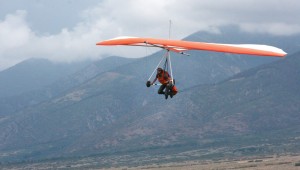By Peter Anderson
You are at the glory hole and you are waiting for an emergence. The air coming up from a hole in the side of the mountain is cooler. You look down into the shaft of this abandoned iron mine and feel a slight breeze, but you don’t see much. It is a dark portal into a deep cavern.
Think of this time as akin to that twilight transition between waking and sleeping.
What is about to happen is not unlike a dream. At first, it is only a deep stirring, somewhere in the darkness below you. When you finally notice some movement you see only a few bats, ascending like shards of night sky into the twilight. These are the first of several hundred thousand Mexican free-tail bats soon to follow.
Bats know how to listen to echoes that we can’t hear. They know how to ride the night winds. Our world is lit up and predictable; theirs, as far as we’re concerned, is dark and strange. Maybe that’s why we admire these winged mammals. Maybe that’s why we fear them. They live in darkness, which we avoid, because predators – real or imagined – live there.
We don’t really know how bats find their way. They listen, sure, but they can also see. Some say they can lock in on a landmark many miles in the distance, and maybe that is how they find their way back to this hole, a few at a time, come dawn. Here, in the foothill twilight, what matters is how they rise into a vast whirling column. What matters is the breeze and the sound, like moving water, they leave in their wake. What matters is this great surge of wings, as it rivers into the sky from the heart of the mountain.
Note: On most summer evenings, you can see this great emergence of several hundred thousand Mexican free-tail bats at the Orient Mine, which is part of the Orient Land Trust north of Crestone and southeast of Villa Grove.


